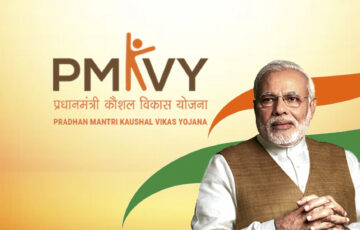Governance and Urban Development: Making Delhi a Model City
Introduction
The governance of Delhi, India’s capital, is unique due to its status as a Union Territory with a state legislature. The interplay between the central and state governments plays a crucial role in its development. To transform Delhi into a modern, efficient, and sustainable city, a multi-pronged approach is required, focusing on infrastructure, public services, and environmental sustainability.
Key Issues and Challenges
1. Urban Infrastructure Deficit:
- Delhi has seen significant infrastructure development, but challenges remain in road maintenance, sewage systems, and urban planning.
- The pending approval of Delhi’s 2041 Master Plan highlights bureaucratic delays in urban governance.
2. Waste Management and Environmental Concerns:
- The city faces severe challenges in solid waste management and wastewater treatment.
- Air pollution remains a critical issue, necessitating integrated mass public transport and green urban planning.
3. Public Health and Healthcare System:
- The COVID-19 pandemic exposed gaps in healthcare infrastructure, including oxygen supply shortages.
- An urgent need exists for improved public health services, particularly in slums and underprivileged areas.
4. Governance Structure and Administrative Hurdles:
- Delhi’s governance is divided between the centrally appointed Lieutenant Governor (LG) and the elected state government.
- Coordination between the two entities is essential for smooth policy implementation.
Solutions and Way Forward
1. Urban Planning and Infrastructure Development:
- Update and implement the Delhi 2041 Master Plan with time-bound targets.
- Invest in smart city initiatives, including digital infrastructure, green spaces, and sustainable land use.
2. Environmental Sustainability Measures:
- Strengthen waste management through advanced recycling and waste-to-energy projects.
- Expand and modernize the public transport network to reduce vehicular emissions.
- Promote clean energy adoption, including solar energy and electric vehicles.
3. Strengthening Public Services:
- Improve healthcare infrastructure with better emergency preparedness and resource allocation.
- Enhance public safety and law enforcement mechanisms in coordination with the central government.
4. Inter-Governmental Coordination:
- Foster cooperation between the central and state governments for effective governance.
- Institutionalize mechanisms for policy alignment and dispute resolution between the LG and the state government.
Conclusion
Delhi’s transformation into a world-class city requires a holistic approach encompassing governance reforms, infrastructure upgrades, environmental sustainability, and efficient public services. The collaboration between the central and state governments is vital to realizing this vision, ensuring that Delhi becomes a model urban center aligned with India’s broader developmental goals.
Urban governance and development are pivotal topics in the UPSC Civil Services Examination, particularly within the General Studies Paper II (GS Paper II), which encompasses Polity, Governance, and Social Justice. Below are some pertinent questions from previous UPSC Mains examinations, along with structured answers to guide your preparation.
Mains Question GS2
1. Question:
“Discuss the key challenges that hinder the efficient functioning of Urban Local Governments in India. Suggest measures to overcome these challenges.”
Answer:
Introduction:
Urban Local Governments (ULGs), established under the 74th Constitutional Amendment Act, are entrusted with the responsibility of administering urban areas in India. Despite constitutional provisions, ULGs face several challenges that impede their efficient functioning.
Key Challenges:
- Limited Financial Autonomy:
- ULGs often depend heavily on state governments for funds due to inadequate revenue-generating capacities. This dependency restricts their ability to undertake development projects independently.
- Inadequate Devolution of Powers:
- States exhibit reluctance in transferring functions listed in the 12th Schedule, leading to overlapping responsibilities and administrative inefficiencies.
- Capacity Constraints:
- Many ULGs lack adequately trained personnel and face infrastructural deficits, hindering effective service delivery and governance.
- Political Interference:
- Frequent interventions by state-level politicians can disrupt local governance processes, undermining the autonomy of ULGs.
- Urban Planning Deficiencies:
- Rapid urbanization without corresponding planning leads to issues like informal settlements, inadequate infrastructure, and environmental degradation.
Measures to Overcome Challenges:
- Enhancing Financial Independence:
- Empower ULGs to generate revenue through property taxes, user charges, and public-private partnerships, reducing reliance on state funds.
- Comprehensive Devolution of Functions:
- States should fully implement the 74th Amendment by transferring all 18 functions listed in the 12th Schedule to ULGs.
- Capacity Building Initiatives:
- Implement training programs to enhance the skills of municipal staff and invest in modern infrastructure to improve service delivery.
- Ensuring Political Autonomy:
- Establish clear guidelines to minimize undue political interference, allowing ULGs to function independently.
- Integrated Urban Planning:
- Adopt comprehensive urban planning strategies that address housing, transportation, and environmental sustainability to manage urban growth effectively.
Conclusion:
Strengthening Urban Local Governments is crucial for effective urban governance and sustainable development. By addressing these challenges through targeted measures, ULGs can become more autonomous, efficient, and responsive to the needs of urban populations.
2. Question:
“The states in India seem reluctant to empower Urban Local Bodies both functionally as well as financially.” Comment.
Answer:
Introduction:
The 74th Constitutional Amendment Act aimed to create self-governing Urban Local Bodies (ULBs) by devolving powers and responsibilities. However, the reluctance of states to fully empower ULBs has been a persistent issue.
Functional Reluctance:
- Partial Devolution of Functions:
- Many states have not transferred all 18 functions listed in the 12th Schedule, leading to limited functional autonomy for ULBs.
- Control Over Key Departments:
- States often retain control over crucial urban sectors like water supply and urban planning, restricting ULBs’ operational scope.
- Financial Reluctance:
- Limited Revenue-Generating Powers:
- ULBs have constrained authority to levy taxes and often depend on grants from state governments, limiting their financial autonomy.
- Delayed Fund Transfers:
- Even when funds are allocated, delays in disbursement from state governments impede timely project implementation by ULBs.
Implications:
- Hindered Urban Development:
- The reluctance to empower ULBs leads to inefficiencies in service delivery and infrastructure development, affecting urban living standards.
- Erosion of Local Democracy:
- Without genuine devolution, the spirit of decentralized governance is compromised, reducing public participation in local governance.
Conclusion:
For ULBs to function effectively and fulfill their intended role in urban governance, states must demonstrate a commitment to both functional and financial devolution. Empowering ULBs is essential for responsive and sustainable urban development.
3. Question:
“To what extent, in your opinion, has the decentralization of power in India changed the governance landscape at the grassroots?”
Answer:
Introduction:
Decentralization in India, institutionalized through the 73rd and 74th Constitutional Amendments, aimed to empower local self-governments in rural and urban areas, respectively. This shift was intended to enhance governance at the grassroots level.
Positive Changes:
- Enhanced Local Participation:
- Decentralization has facilitated greater involvement of local communities in decision-making processes, ensuring that governance reflects local needs and priorities.
- Improved Service Delivery:
- Local bodies, being closer to the populace, have been able to address issues like sanitation, water supply, and infrastructure more effectively.
- Empowerment of Marginalized Groups:
- Reservation policies within local bodies have increased political participation among Scheduled Castes, Scheduled Tribes, and women, promoting inclusive governance.
Challenges Persisting:
- Limited Financial Autonomy:
- Despite decentralization, many local bodies lack adequate financial resources, hindering their ability to execute development projects independently.
- Capacity Constraints:
- A deficit in administrative and technical expertise at the local level often impedes effective governance and project implementation.
- State Interference:
- Continued control by state governments over certain functions and resources limits the autonomy of local bodies, diluting the essence of decentralization.
Conclusion:
While decentralization has positively transformed grassroots governance by promoting local participation and inclusivity




